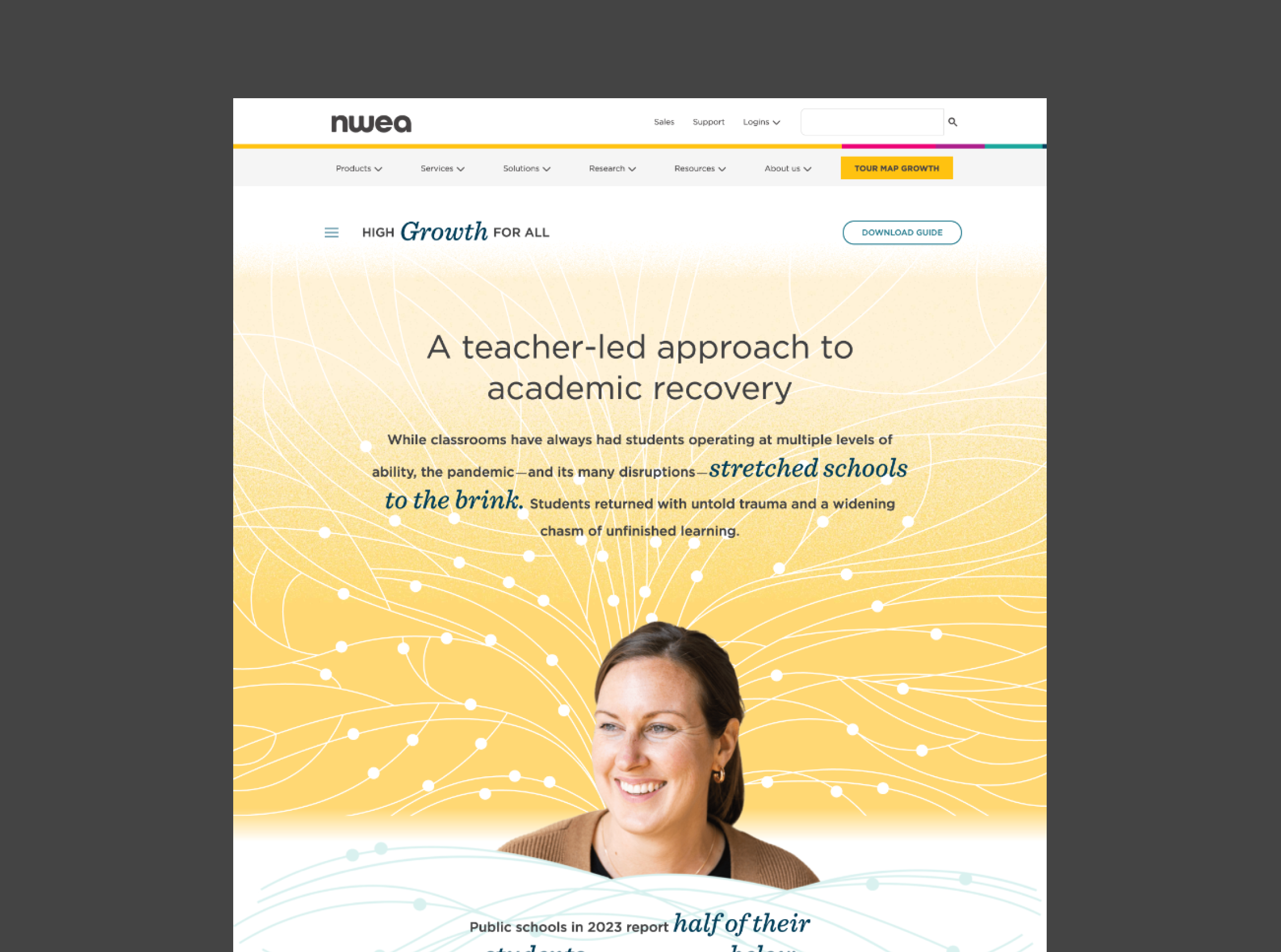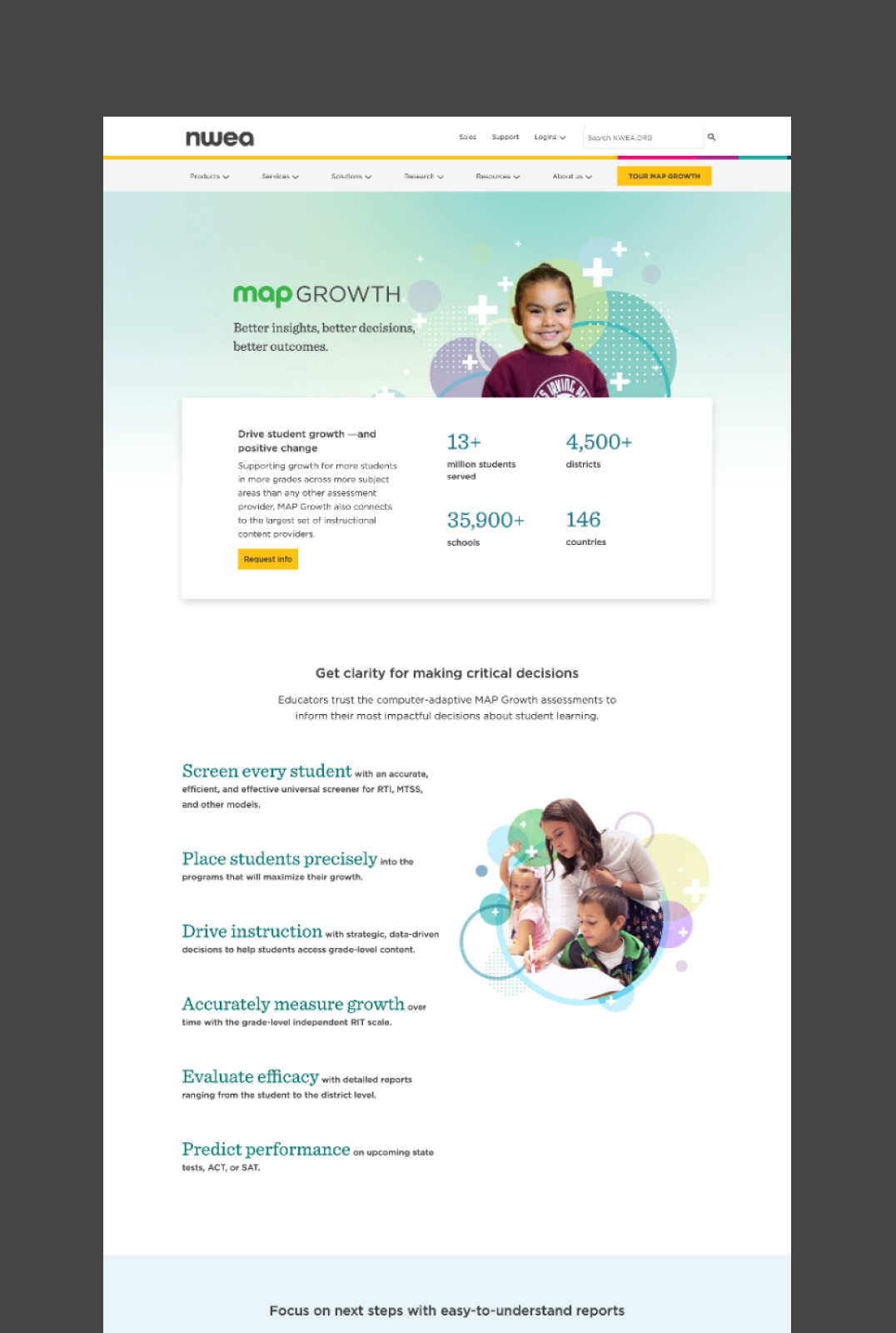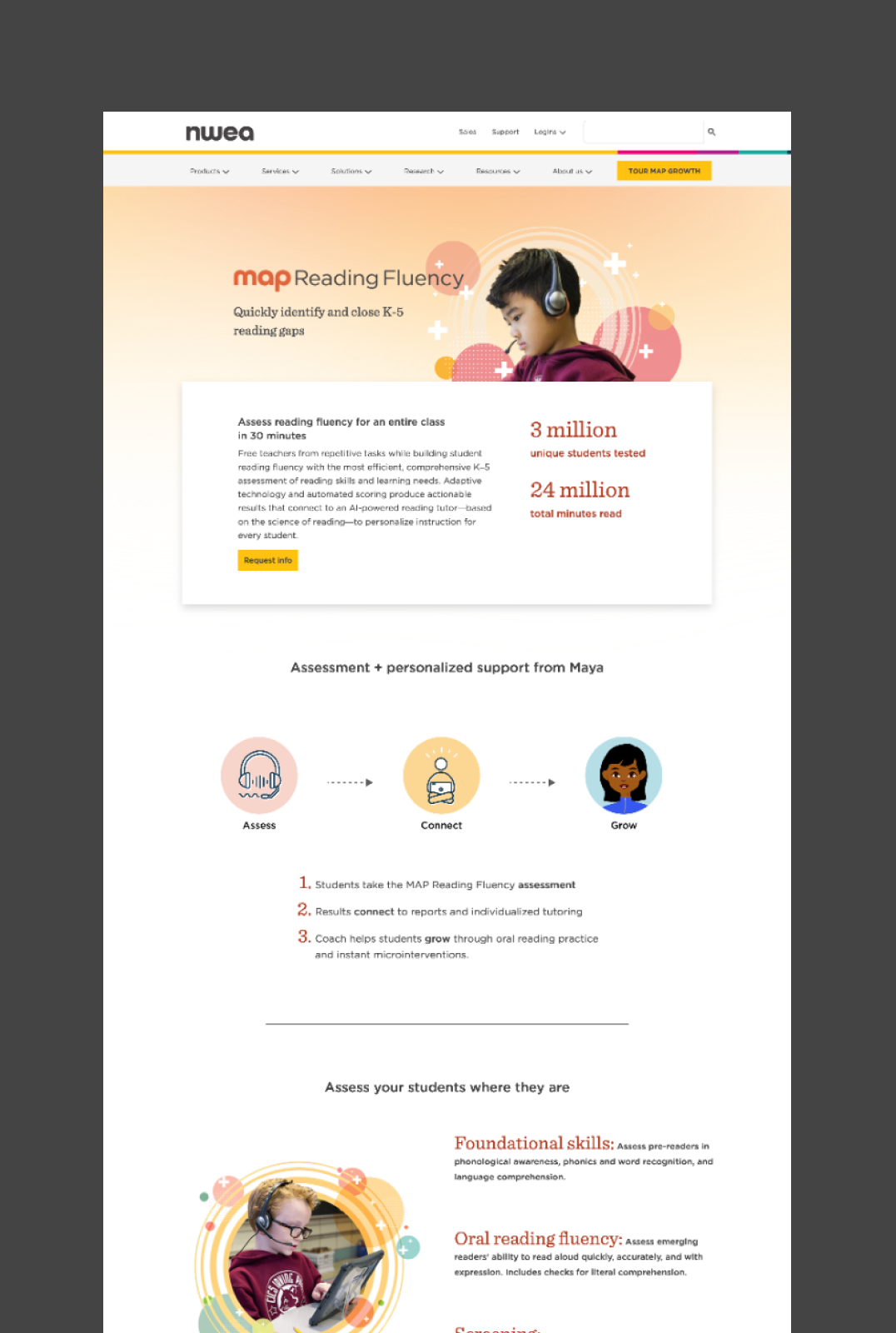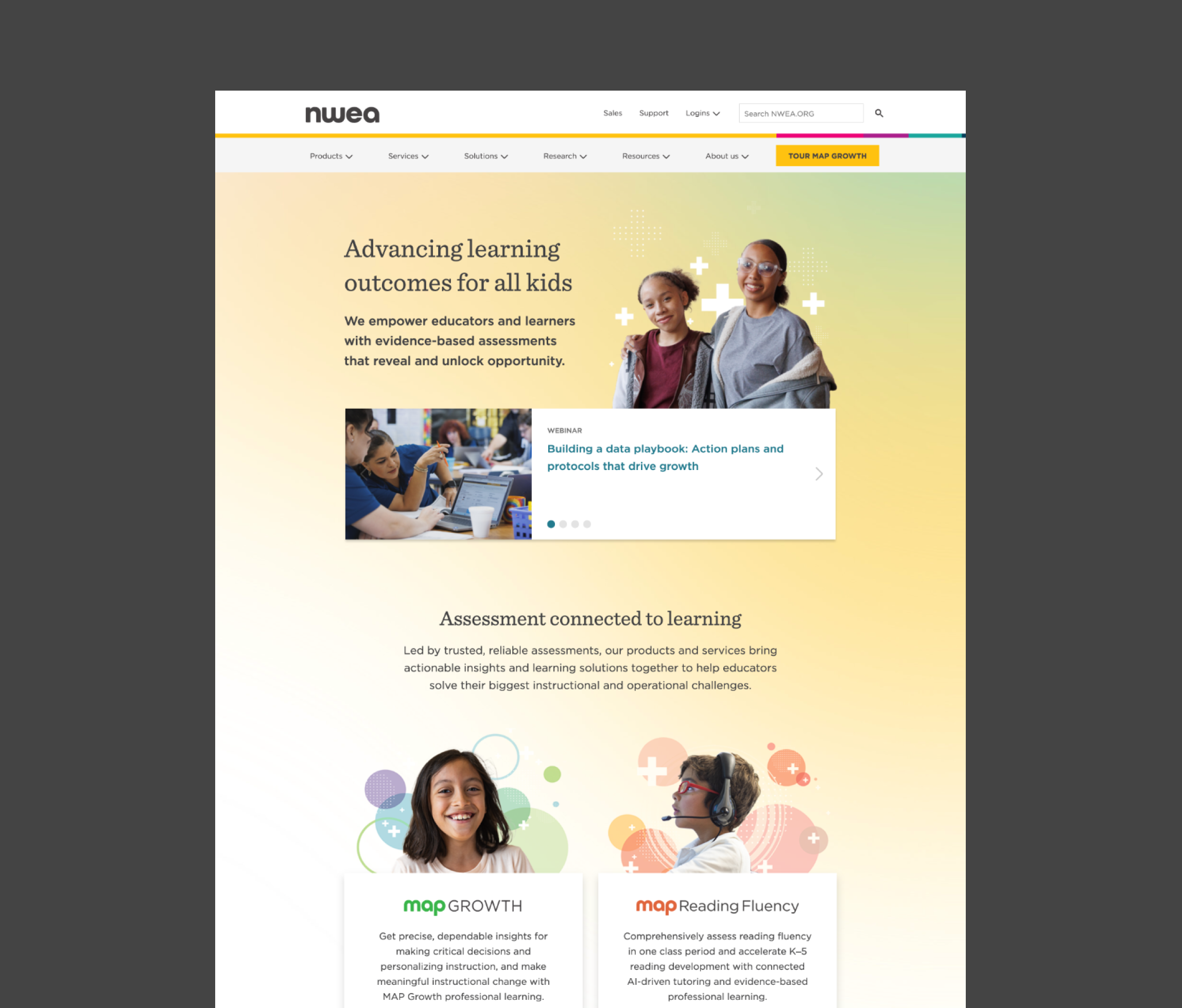Revamping the content editing experience for NWEA.org
Role
Digital Content Specialist
Year
2022
Areas
UX/UI, Content Management
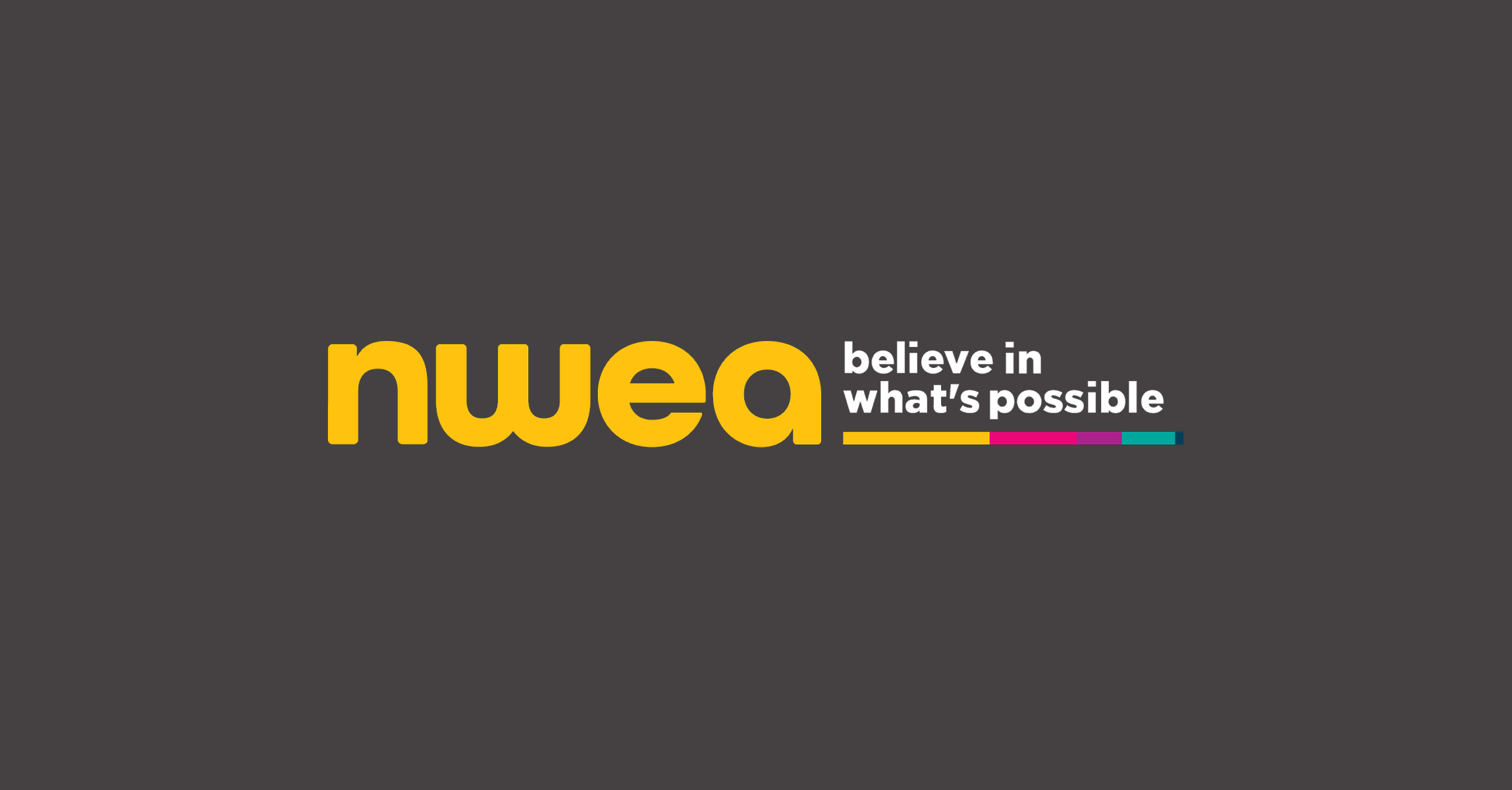
Background
As the central hub for digital operations, the enterprise website serves as the foundation of the NWEA’s online presence. Up until 2023, the site delivered a functional experience. However, as the audience, content volume, and brand/marketing needs expanded, the limitations of the platform were evident.
Some of the more glaring issues were limitations with the flexibility of content management system, and an outdated tech stack that could not effectively support the roles that the website presently played and would need to in the future. Without a tech stack that could support these functions, multiple expensive third-party services were required for basic content management abilities. The content development experience, especially for assembling landing pages, became increasingly cumbersome and inflexible to content editors.
Around the same time, NWEA entered the beginning stages of an iterative branding refresh/redesign.
Approach
These priorities led to a full rebuild of NWEA.org, aimed to modernize the tech stack and reimagine the content management experience. As Digital Content Specialist, I translated editorial and marketing needs into CMS requirements, guided development, and led much of the content migration. The goal was a seamless “tablecloth pull” migration with no disruption for users.
For page building, we used WordPress with a custom in-house theme based on the Gutenberg editor. Instead of relying heavily on custom UI for every component, we extended Gutenberg’s native editor where possible and reserved custom development for cases requiring unique functionality.
Our content management solution included:
- A reusable design system of front-end components, documented in Figma with designs, requirements, and technical specifications for developers.
- A visual page builder integrated with brand standards and styles, allowing non-technical editors to turn design comps into live pages. Custom blocks and UI controls were added where needed.
- A modernized deployment workflow on an updated tech stack, creating a stable and scalable foundation for future development.
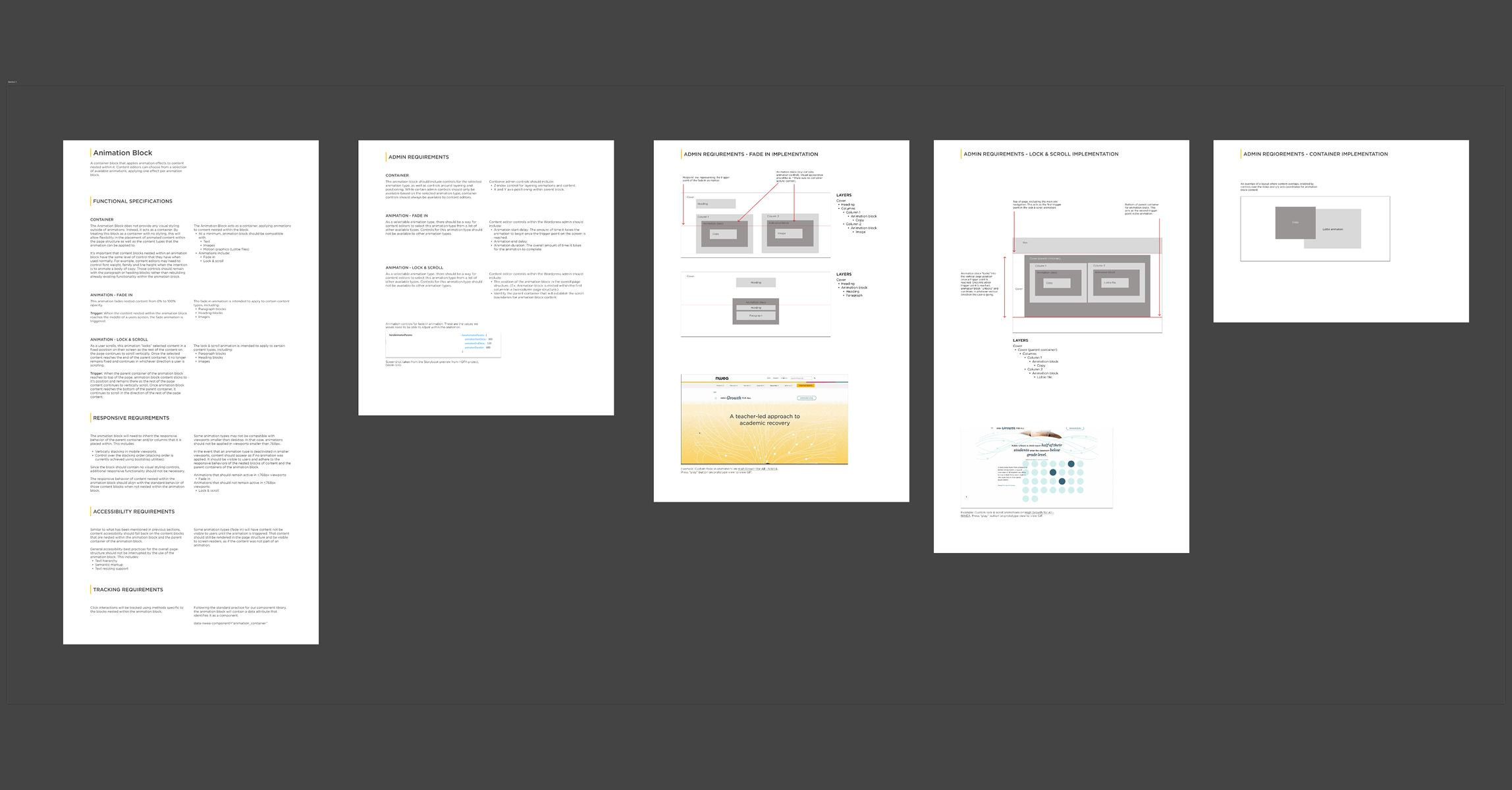
An example of the documentation we put together for new components we built. Specifically, this component was part of our strategy to implement subtle animations to elements on our pages.
Impact
It worked! The page-building experience became significantly more flexible while reducing the time required for editors to create new pages. Landing pages with new components and functionality could be assembled quickly. The component library became an important foundation that allowed us to replace several third-party services with in-house solutions, lowering costs and simplifying workflows. As the brand redesign rolled out, component-level and page-level consistency improved, reaching a standard that had been difficult to maintain under the old system.
Measuring the impact of a project like this can be tricky. To make things less tricky in the future, we also updated our interaction tracking using Google Tag Manager and Google Analytics 4. This proved to be an invaluable step in understanding user behavior and measuring the success of our content strategy moving forward.
So, considering I may not have the flashiest numbers to express the positive impact this project had, here's a gallery of a small selection of some of the work made possible by these new foundations.
